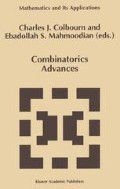Abstract
The advent and the upkeep of life is intimately related to the generation, processing and propagation of information on the molecular level. To understand and to analyze the basic processes of life in a scientifically satisfying and pertinent way, the concept of information will have to be added, therefore, to the list of basic concepts like energy, matter, entropy, etc., developed and clarified in the natural sciences during the last centuries [1]. Information, even though it is encoded in terms of specific spatial and/or temporal forms, patterns, or structures of matter, cannot be identified with its physical carrier or host—just as a river or even a simple wave cannot be identified with the water it carries along.
Access this chapter
Tax calculation will be finalised at checkout
Purchases are for personal use only
Preview
Unable to display preview. Download preview PDF.
References
Cf. e.g. L. Boltzmann, Wiss. Abh., ed. F. Haenoehrl ( Chelsea, New York, 1968 ).
C. Shannon and W. Weaver, The Mathematical Theory of Communication (U. Of 111. Press, Urbana-III., 1969 ), see also L. Brillouin, Science and Information Theory (Acad. Press, New York, 1971 ).
Cf. e.g. UPAC, Nomenclature of Organic/Inorganic Chemistry (Pergamon Press, Oxford, 1979/1981) or How to Name an Inorganic Substance ( Pergamon Press, Oxford, 1981 ).
R.W. Hamming, Bell Syst. Tech. J. 29, 147 (1950).
M. Eigen et al., Science 244, 673 (1989).
M. Eigen et al., Proc. Natl. Acad. Sci. U.S.A. 85, 5913 (1988).
M. Eigen and K. Nieselt-Struwe, Aids 4 (suppl. 1), 885 (1990).
A.W.M. Dress, Statistische Geometrie von Konfigurationen und deren Evolution in Sequenzräumen—Definition und Probleme; ein Program- mvorschlag, Preprint, Bielefeld (1986).
F. Klein, Das Erlanger Programm—vergleichende Betrachtungen über neuere geometrische Forschungen, ed. H. Wussing (Akad. Verl.-Ges. Geest & Portig, Leipzig, 1974 ).
Cf. e.g. L. Blumenthal, Theory and Applications of Distance Geometry (Chelsea Publ. Comp., Bronx-N.Y., 1970 ).
H.H. Bock, Automatische Klassifikation (Vandenhoeck and Ruprecht, Gottingen, 1974). M. Nei, Molecular Evolutionary Genetics (Columbia University Press, New York, 1987 ), A. Gordan, J.R. Statist. Soc. A 150, 119 (1987).
M.D. Hendy and D. Penny, Spectral Analysis of Phylogenetic Data, J. Classificatin 10, 5–24 (1993).
H.-J. Bandelt and A.W.M. Dress, Bull. Math. Biology 51, 133 (1989).
H.-J. Bandelt and A.W.M. Dress, A Canonical Decomposition Theory for Metrics on a Finite Set, Advances in Mathematics 92, 47–105 (1992).
J. Dopazo et al., Split Decomposition: a New Technique to Analyse Viral Evolution, PNAS 90 (1993).
J.M.S. Simões-Pereira, J. Combin. Theory Ser. B 6 303 (1969), P. Bunemann, J. Combin. Theory Ser. B 17, 48 (1974).
H.-J. Bandelt and A.W.M. Dress, Split Decomposition: A New and Useful Approach to Phylogenetic Analysis of Distance Data, Molecular Phylogenetics and Evolution, Vol. 1, No. 3, September, pp. 242–252, 1992.
H. Leffers et al., J. Mol. Biol. 195, 43 (1987).
A.W.M. Dress, in Ordnung aus dem Chaos, ed. B.O. Küppers ( Piper, Munchen Zürich, 1987 ), 103.
M. Eigen and P. Schuster, Naturwissenschaften 64, 541 (1977), 65, 341 (1978).
M. Eigen et al., in Adv. Chem. Physics 75, 149, eds. I. Prigogine & S.A. Rice (John Wiley & Son, 1989); M. Eigen et al., J. Phys. Chem. 92, 6881 (1988).
M. Kimura, The Neutral Theory of Molecular Evolution (Cambridge Univ. Press, Cambridge, 1984 ).
S. Wright, in Proceedings 6th Congress on Genetics 1, 356 (1932), S. Kaufmann and S. Levin, J. Theor. Biol. 128, 11 (1987).
Author information
Authors and Affiliations
Editor information
Editors and Affiliations
Rights and permissions
Copyright information
© 1995 Kluwer Academic Publishers
About this chapter
Cite this chapter
Dress, A. (1995). Some Mathematical Problems Arising in Molecular Bioinformatics: The Concept of Bioinformatics. In: Colbourn, C.J., Mahmoodian, E.S. (eds) Combinatorics Advances. Mathematics and Its Applications, vol 329. Springer, Boston, MA. https://doi.org/10.1007/978-1-4613-3554-2_6
Download citation
DOI: https://doi.org/10.1007/978-1-4613-3554-2_6
Publisher Name: Springer, Boston, MA
Print ISBN: 978-1-4613-3556-6
Online ISBN: 978-1-4613-3554-2
eBook Packages: Springer Book Archive

